Wartime Heritage
ASSOCIATION

RCAF Station (West Camp) Yarmouth, Nova Scotia
(From the Air to Destroy
the Beast)
RCAF Yarmouth (West Camp) was located nearest to the town
on the west side of the airport and was a Royal Canadian Air
Force airbase established for anti-Submarine Bomber
Reconnaissance squadrons.
RCAF Yarmouth (West Camp)
The squadrons ( #’s 5, 10, 113, 119, 149, 160, 161, and 162) supplied all their own air crews, flight mechanics and repairment and
kept all aircraft and aircrew records, logs of daily operations, flying hours, aircraft used and trips flown. The Squadrons flew daily
patrols over convoys at sea and accompanied the troop ferry Princess Helene on her thrice-daily trips between Saint John, New
Brunswick, and Digby, Nova Scotia. The base was also served by the Eastern Air Command Meteorological Flight and the Hudson
Training and Conversion Unit.
RCAF Yarmouth (West Camp) Squadrons
5 BR Squadron
5 Bomber Reconnaissance Squadron operated between August 2, 1944, and May 7, 1945, from RCAF
Station Yarmouth. The squadron flew Canso aircraft.
Commanders: S/L J. M. Viau (April 16, 1944 - January 26, 1945)
W/C W. M. Doherty (January 27, 1945 - June 15, 1945)
The Squadron was primarily used in an anti-submarine role with Eastern Air Command and was based at
Dartmouth, Nova Scotia, Gander, Newfoundland, Torbay, Newfoundland, Yarmouth, Nova Scotia and
Sydney, Nova Scotia.
10 BR Squadron
5 Bomber Reconnaissance Squadron operated between March 20, 1942, and June 7, 1942 from RCAF
Station Yarmouth. The squadron flew Canso aircraft. The aircraft of the squadron based at RCAF
Yarmouth were absorbed by 162 RCAF Squadron in June 1942.
113 BR Squadron
This Squadron operated between February 15, 1942, and May 10, 1943 from RCAF Station Yarmouth.
The Squadron flew Lockheed Hudson aircraft and Vega Ventura Aircraft on anti-submarine patrols. After
a year and a half at Yarmouth, the Squadron moved on to Sydney, Nova Scotia.
The Hudson aircraft of 113 Squadron were later replaced with Ventura aircraft, a larger and heavier
version of a Hudson but more difficult and dangerous to fly.
Detachments of five aircraft were stationed at Mont Joli, Quebec and Moncton, New Brunswick where
they flew anti-submarine reconnaissance patrols over the Gulf of St. Lawrence and the shipping lanes
off Halifax Nova Scotia.
In July of 1942, S/L Small of 113 Squadron sank the first submarine in Eastern Air Command off Cape
Sable
119 BR Squadron (City of Hamilton Squadron)
The Squadron was based at RCAF Station Yarmouth between July 21, 1940, through January 10, 1942.
On July 21, 1940, the squadron was assigned to RCAF Eastern Air Command for service at Yarmouth,
Nova Scotia, and began a rotation of duty locations to Sydney NS, deploying two plane detachments to
RCAF Station Dartmouth NS, and shorter RCAF Station Chatham NB, and Mont Joli, Quebec. Assigned to
anti-submarine duty, the Squadron flew in support of RCN/RN and later United States Navy activities over
the Gulf of St. Lawrence and the waters adjacent to Cabot Strait.
Flying Bolingbrokes, twin-engine aircraft, its first operational mission while at Yarmouth was to escort
HMS Ramillies through the Bay of Fundy, a Revenge-class battleship assigned for North Atlantic convoy
escort from Halifax on March 17, 1941, to Saint John, New Brunswick.
After a tour of anti-sub reconnaissance at Yarmouth, this Squadron moved to Sydney, N.S.
The Canso Squadrons
162 BR Squadron
160 BR Squadron
161 BR Squadron
These three Bomber Reconnaissance Squadrons flew Canso aircraft.
The large high winged, slow, graceful aircraft were familiar sights in the skies around Yarmouth until
mid-1945.
- used for anti-submarine patrols,
- escorting the Canadian Pacific Ferry Princess Helene across the Bay of Fundy
- weekly weather runs over eastern coastal waters.
Some aircraft of 162 Squadron flew reconnaissance missions with 113 Squadron in early 1942 and the Squadron stayed at Yarmouth
until the fall of 1943.
161 Squadron had a detachment of two aircraft operating with 160 Squadron in May 1944. The complete squadron arrived in late
fall and was based at West Camp, flying daily trips with the Princess Helene until the Squadron was disbanded in May of 1945.
Army Cooperation Detachment
A detachment of two Lysander aircraft was stationed at Yarmouth for two years. This flight was just one of six such Canadian Army
Cooperation detachments in the Maritimes.
Eastern Air Command Meteorological Flight
EAC Met Flight was formed at Yarmouth on October 12, 1943 with Canso aircraft. The Squadron had no number. It played an
important part in the operation of the base. Aircraft from the Met squadron flew every day from Yarmouth and ranged far out to sea
from zero to 10,000 feet altitude taking weather information to relay back to base. This data was used to predict weather over
convoy routes as a guide foro patrol aircraft.
Eastern Air Command Hudson Training Unit (HTU)
This Squadron was formed at Yarmouth in Apeil 1942 and was disbanded in April 1943. It consisted of six Lockheed
Hudsons and one Canso aircraft. Its purpose was to train pilots for the Squadrons of Eastern Air Command. Initially
individual pilots were trained; however, it was decided that the HTU would also train crews (pilots, navigators, and
radio operators. Instruction was given on Hudson aircraft and later crews were trained on Canso-A aircraft.
145 Squadron
This squadron was formed in Torbay, Newfoundalnd and flew anti-submarine patrols with Lockheed Husdon and Vega Ventura
aircraft. The squadron was disbanded at Dartmouth, NS, on JUne 30, 1945. The squadron has 6 Ventura aircraft based in Yarmouth
from May 11 to June 8, 1945. When 113 Squadron was disbanded, six Ventura aircraft joined 145 squadron at Torbay from August
17, 1944 to May 10, 1945.
#6 (RCAF) Group
Preparing for the Pacific Force - Yarmouth NS
With victory in Europe secured, the Allied leaders had prepared for the final struggle in the Pacific. Nearly 80,000 Canadians
volunteered to join the Pacific forces and began concentrating at nine stations across Canada in July 1945. Canadian naval
participation was to provide sixty ships, manned by 13,500 men. However, the war was over before this help was needed.
In the summer of 1945, with the end of the war in Europe, two squadrons of the RCAF #6 Bomber Group arrived at RCAF Yarmouth,
one to West Camp and one to East Camp, flying Avro Lancaster bomber aircraft. They were to train for the Far East Pacific
Campaign; however, the war ended when the “A’ bomb was dropped and the squadrons were disbanded.
After East Camp was closed on March 30, 1945
and West Camp was winding down, Yarmouth
was the home of a training squadron of
operational Lancaster Bomber aircraft. The
first unit of this group flew into Yarmouth in
June of 1945 with Lancaster B Mk X’s which
they had ferried from England. They were to
be part of 661 Heavy Bomber Wing of Tiger
Force, for Pacific operations and were
designated #6 (RCAF) Group. Crews
immediately took a month leave. Personnel
began returning from leave at the end of July,
but their units were still being reorganized.
Station Yarmouth was still furnishing the
quarters of the force in early August, and the
training that commenced on August 8
consisted of preliminary lectures but there
was still no flying practice.
Crews were to train at several Maritime locations on Lancaster X’s which had been on operations in England a short time before. The
Group was to have been operational on Lincolns, a sleek version of the Lancaster, in the Pacific by December, 1945. However the
dropping of the Atom bombs on Hiroshima and Nagasaki and the cessation of hostilities with Japan negated the use of the plan and
Tiger Force Yarmouth was disbanded on September 5, 1945

copyright © Wartime Heritage Association
Website hosting courtesy of Register.com - a web.com company
RCAF Station Yarmouth
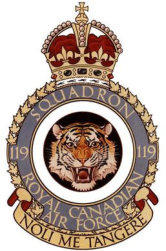
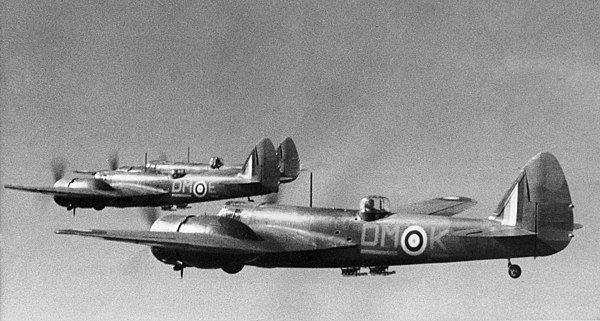
119 (BR) Sqn Bolinbrokes in formation out of Yarmouth on August 25, 1941
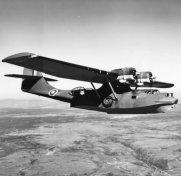
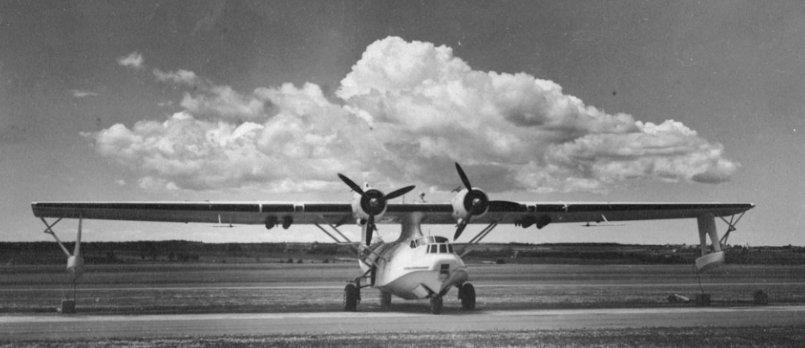
Consolidated 'Canso' A flying boat of No. 161 (BR) Squadron, RCAF Yarmouth, NS
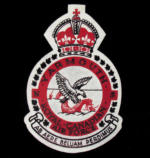
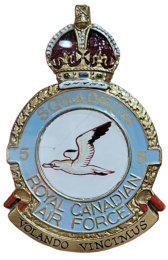

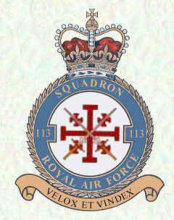
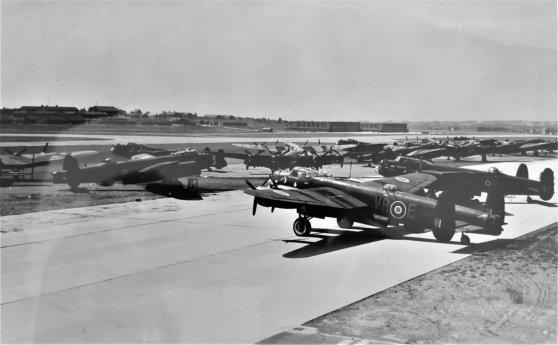
Lancasters from 419 and 428 Squadron at Yarmouth, NS after returning from Europe.
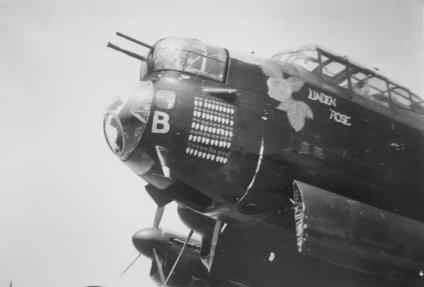
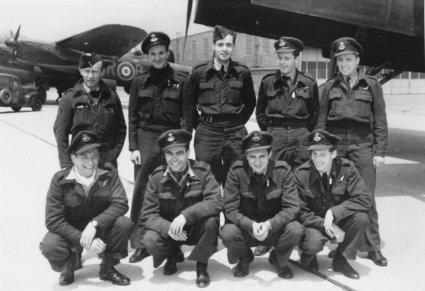
Peter Wiens (back row on right) and crew members in Yarmouth, NS after
flying from Middleton-St-George, England
West Camp
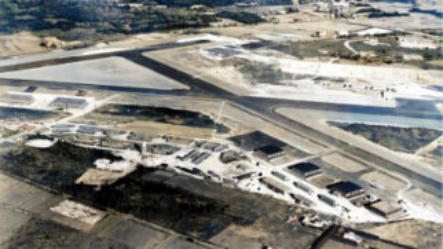


- World War I - Menu
- WWI Stories and Articles
- Photos - Yarmouth Soldiers
- Selection of World War I Songs
- WWI Casualties of Yarmouth, NS
- Those Who Served - Yarmouth, NS
- WWI Casualties Digby Co. NS
- WWI Casualties Shelburne Co. NS
- Merchant Mariners (1915) Yarmouth, NS
- Canadian Forestry Corps - Non Yarmouth Birth/Residence Enlistments
- US Draft Registry - Yarmouth NS Born


- World War II - Menu
- WWII Stories and Articles
- Telegraphist Air Gunners
- WWII Casualties of Nova Scotia
- US Casualties with NS Connection
- Far East/Pacific Casualties with NS Connection
- Merchant Navy Casualties Nova Scotia
- Nova Scotia WWII Casualties Holten Canadian War Cemetery
- D-Day Casualties - Nova Scotia
- CANLOAN Program Casualties - Nova Scotia
- Battle of the Bulge Casualties - Nova Scotia
- WWII Casualties Yarmouth NS
- Yarmouth Casualties - RCAF RAF Canadian Army WWII
- Yarmouth Co., Marrages WWII
- Casualties Non-Born/Residents with Connection to Yarmouth Co., Nova Scotia.
- WWII Casualties Digby Co., NS
- Non-Nova Scotian WWII Casualties Buried in Nova Scotia
- WWII RCAF Casualties Aged 16-18
- Brothers/Sisters Who Served - World War II













